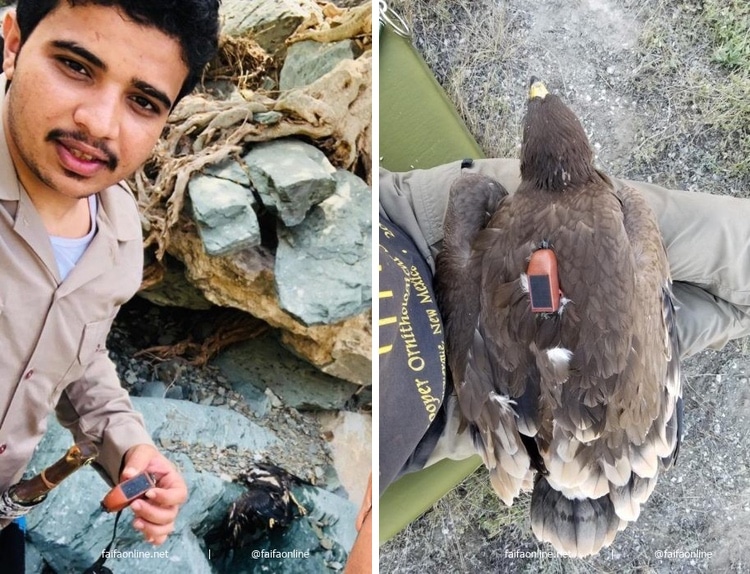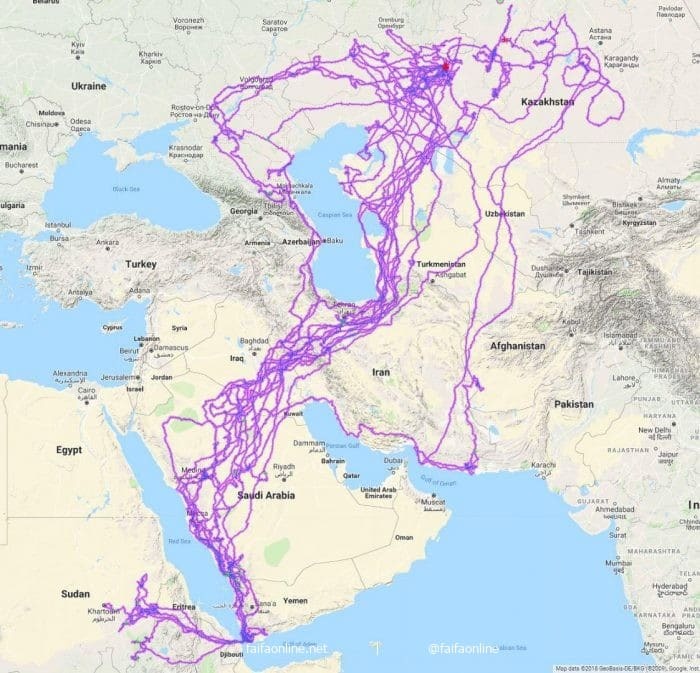While out on a walk, a young man called Fahd Qash from Saudi Arabia came across something peculiar. While walking near a wetland, he came upon a dead eagle with a tracking device fastened to it. Qash was intrigued when he discovered the GPS tracker had an email address printed on it. The gadget was attached to the eagle in Kazakhstan as part of a study on Steppe eagle flight routes.
This eagle was one of 20 that had been followed since 2018, and the resulting map of their movements is breathtaking. Surprisingly, they all appear to avoid flying over water, since the Caspian Sea, Red Sea, and Persian Gulf are all devoid of their tracks. Previously, some news agencies reported that the flight route was for one eagle over the span of 20 years, however experts have pointed out that this is almost impossible. For starters, the OrniTrack gadget that the eagle is wearing was not available 20 years ago, and the battery life is far too short.
Despite this initial misreading of the study, the map still contains a lot of important information. For one thing, it appears to imply that the eagles follow a distinct aerial roadway during their winter trip. As one commentator pointed out, there would be enough of drinking water on the steppes, eliminating the need to fly across the sea to hydrate.
Some traces appear to suddenly end, indicating that some of the eagles, such as the one discovered, perished and ceased travelling. A 2012 research by the organisation British Birds found that eagles can fly up to 220 miles (355 km) in one day and are continually on the move between migrating, nesting, and wintering.
In Saudi Arabia, a dead eagle with a GPS tracker was discovered, and when the owner was contacted, the findings were pretty surprising.


This map shows the migration routes of 20 eagles that were tracked over the course of one year.

h/t: [Bored Panda]

Leave a Reply